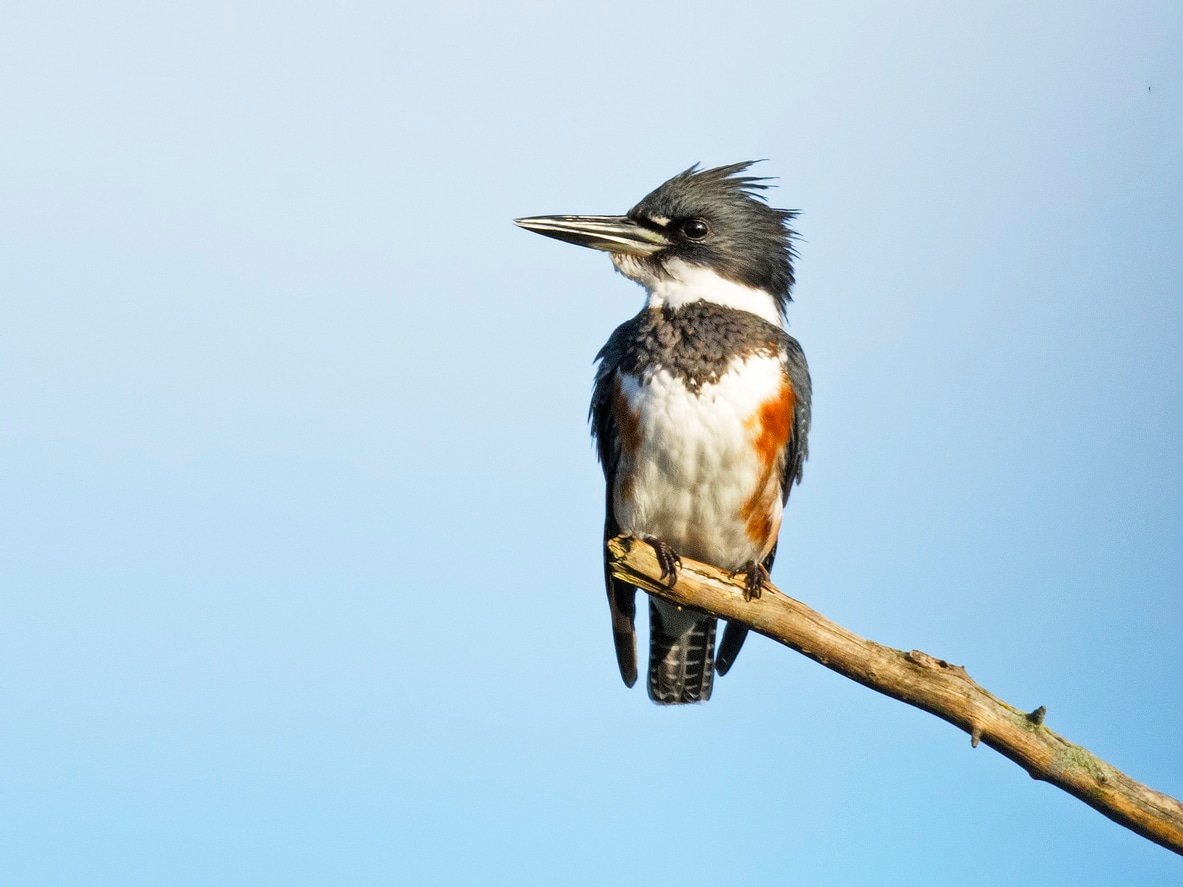Sharks in North & South Carolina: Attacks, Photos, Common Species & More!
North Carolina and South Carolina are states with beautiful shores and sea islands that are bound to take your breath away. The eastern parts of these states are bordered by the majestic Atlantic Ocean which can be a great place to cool off on a hot day or to just admire the ocean’s natural beauty.
If you are adventure-seeking, there are many coastal islands to explore and even more places to swim. But with this adventure comes some danger – sharks.
As daunting as sharks may appear, these incredible creatures don’t attack humans as often as one would think. Movies like ‘Jaws’ and ‘Deep Blue Sea’ have painted a rather inaccurate image of this animal.
North Carolina has reported only ten fatal shark attacks since 1864. Whilst South Carolina has only reported nine unprovoked fatal shark attacks since 1900.
Are sharks really as bad as we’ve been led to believe?
And what should we know about sharks in North Carolina and sharks in South Carolina? Read on to find out the statistics around shark attacks in both states, as well as what species of sharks can be found in each and whether they’re aggressive or not. Some of the information may surprise you!
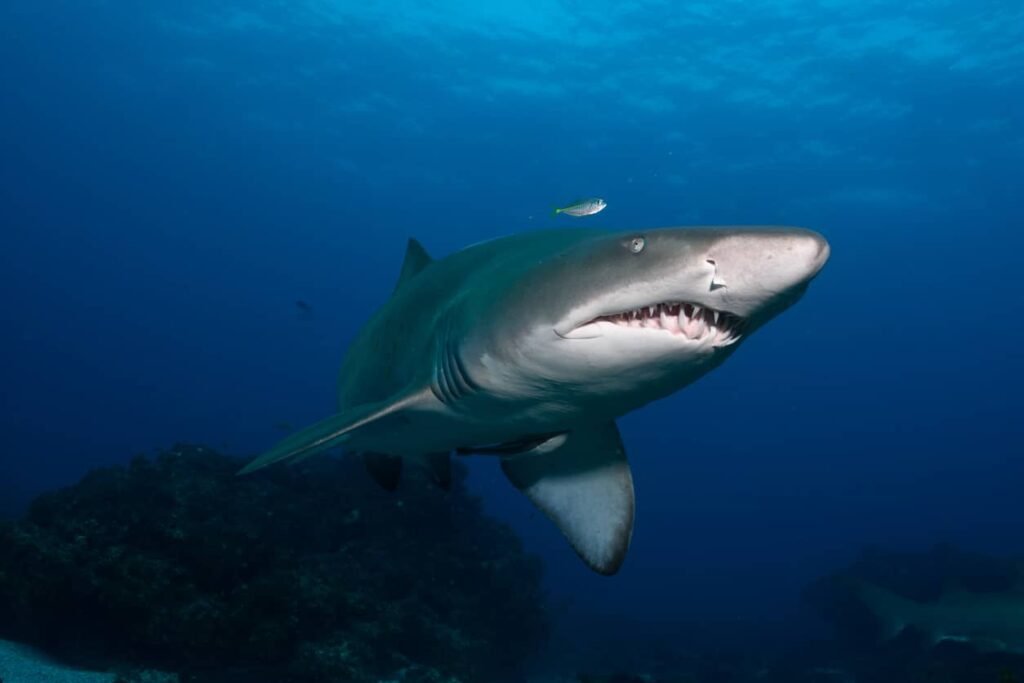
How Often Do Sharks Attack?
Sharks are known to be the apex predators of the ocean and they prove it time and time again, but how often do they attack humans?
The number of attacks in the Carolinas is relatively high compared to other states, but due to the high shark population in the waters of North and South Carolina, that makes sense.
The total number of unprovoked shark attacks in South Carolina only adds up to 116 since 1900, of which only nine were fatal. There are even several years during that time when absolutely no attacks were reported! North Carolina has an even lower number of attacks, adding up to only 84 since 1900, of which just nine were fatal as well.
An unprovoked attack is when a human is attacked by a shark without first provoking the animal. Provoked would be doing something like shark fishing, or a scuba diver approaching a shark and touching them. The statistics above only take into account unprovoked attacks.
Sharks rarely intentionally attack humans and tend to not mind them, but beware if you irritate them or get too close. They can be ferocious creatures when aggravated. Most are not territorial, but some are and if you get to close you may regret your decision.
If you wish to enjoy all that North Carolina and South Carolina have to offer on their shores, just be aware of the presence of these beautiful creatures. Caution is always advised when dealing with wildlife and especially with animals as dangerous as sharks.
The species of shark can tell you a lot about the likeliness of being attacked though, albeit that doesn’t guarantee safety.
Below are common species of sharks in North Carolina, and then common species of sharks in South Carolina, and what you need to know about each.
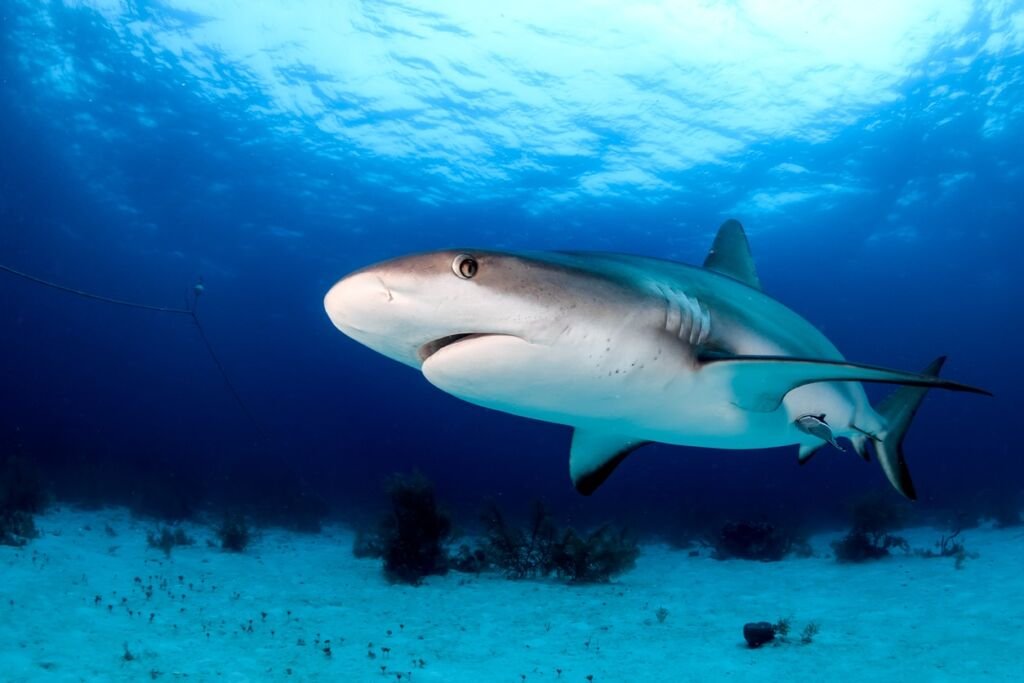
Species of Sharks to Expect in North Carolina and South Carolina
The ocean houses many species of shark and quite a few are common across the world. There are some species that prefer very specific conditions for living. And this is what leads to certain sharks being in one place and not in the other surrounding areas.
Incredibly despite being neighboring states, that means some sharks are more common in North Carolina than they are in South Carolina, and vice versa. We detail some of the most common sharks in North Carolina first, then the most common sharks in South Carolina. Then we look at the sharks you can find in each.
All of the sharks we show you below can usually be found in the waters of both states, but the ones in the North Carolina section are found mainly there, and the same for the sharks in South Carolina.
We’ll also detail how aggressive these sharks are towards humans, and share details around attacks as well.
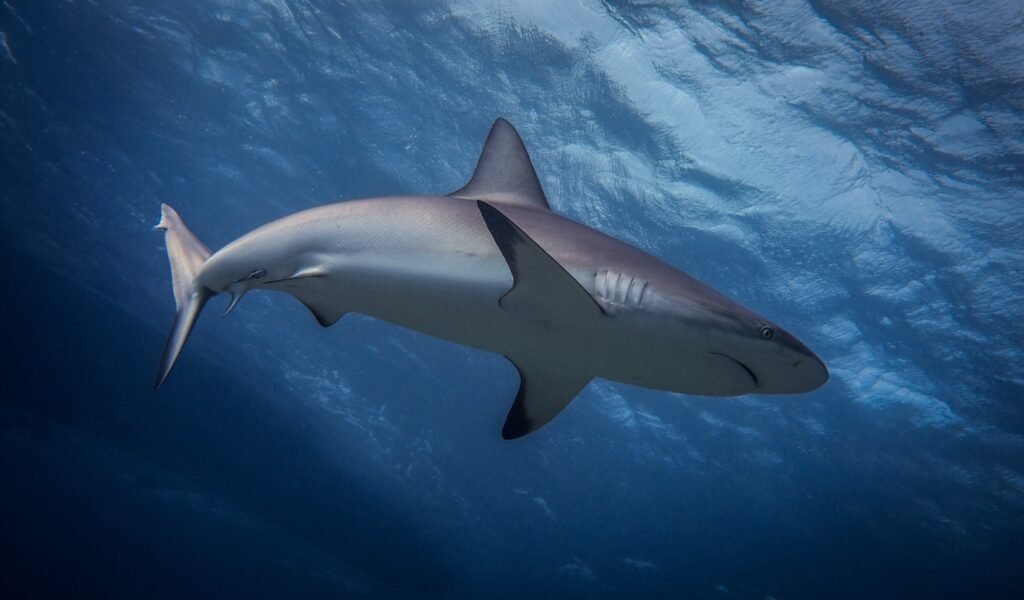
Sharks in North Carolina
In North Carolina, there are many species of shark that can be found. Some sharks prefer to be out in the open sea and others live nearer to the shore or in underwater caves, and even in river mouths and streams!
1. Great White Shark
The Great White Shark needs no introduction to most, as its reputation often precedes it. The Great White is the largest predatorial fish in the whole ocean. Their white bellies, from which they gain their name, and dark contrasting coloured skin on their back indicates their identity well.
The average Great White Shark is huge and weighs between 1500 pounds and 4000 pounds. Some can even weigh more than 5000 pounds. The largest Great White Sharks can grow up to a length of 21 feet.
There are Great White Sharks in North Carolina, but they tend to stay in the deep ocean and do not attack humans often. Most instances of attacks are a result of curiosity from the shark’s side. Attacks almost always don’t result in a second bite and if the first bite was not too severe, you can seek help and get treatment – the survival rate is quite high. However Great White Sharks are responsible for more attacks worldwide than any other shark species.
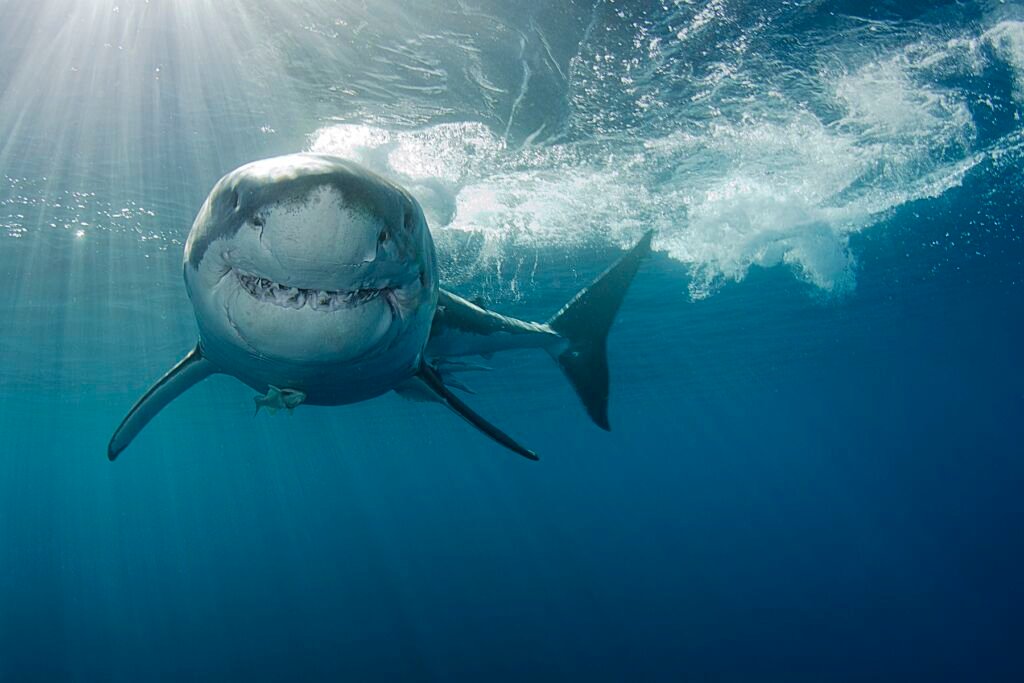
2. Atlantic Sharpnose Shark
The Atlantic Sharpnose is one of the most common sharks in North Carolina. It is a small shark reaching lengths of only 4 feet, although the common Atlantic Sharpnose has a length of just 32 inches and weighs around 8.82 pounds!
These sharks are usually caught in fishermen’s nets. They have white spots and green-grey skin. Due to the choice of habitat, this shark rarely interacts with humans. And because of its small size, its bites are not usually severe or life threatening in any manner.
3. Dusky Shark
The Dusky Shark is one of the biggest coastal sharks in the world. They have a dark grey color with curved fins. These sharks are usually hard to distinguish from other types of similar sharks.
On average they are measured at 12 feet, and can weigh around 420 pounds.
Dusky Sharks rarely attack humans but can be a threat due to their size. Their choice of habitat – close to shore – also puts them in contact with humans which is a cause for concern. But if you are vigilant, you should be quite safe.
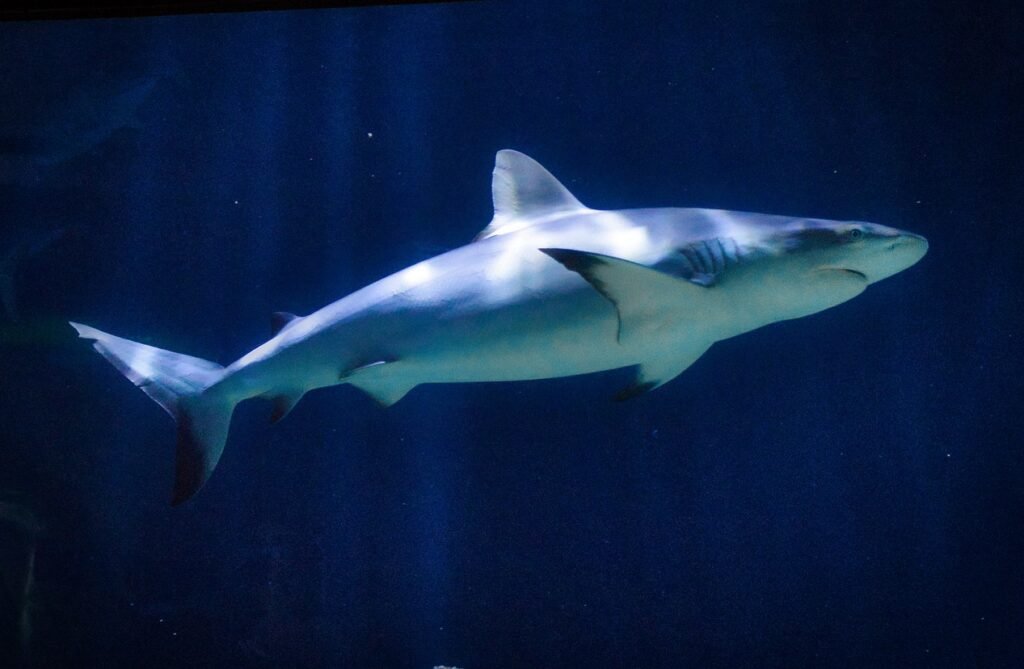
4. Smooth Dogfish Shark
Smooth Dogfish Sharks, also known as Smooth Hound Sharks, are on the smaller side of the shark species scale. They are slender and have dark grey skin and large close-set catlike eyes. These sharks are also prone to getting caught in the nets of fishermen.
Smooth Dogfish Sharks can grow between 46 inches and 64 inches and weigh on average 14.8 pounds in adulthood.
These sharks are small and their bite is considered non-lethal. No unprovoked attack has ever been recorded as of yet from this shark.
5. Scalloped Hammerhead Shark
Part of the hammerhead species, the Scalloped Hammerhead is the most common in North Carolina. These hammerheads resemble other hammerheads such as the smooth and great hammerhead, but gain their name from the notch in the front of their head. Like the other hammerhead species, the Scalloped Hammerhead is an endangered species.
The Scalloped Hammerhead Shark can grow up to 12 feet and can weigh over 300 pounds. The average, however, has males recorded at 6 feet and for the larger females, 8 feet and a weight of 185 pounds.
Though the Scalloped Hammerhead could pose a danger to humans, they often shy away from humans in general.
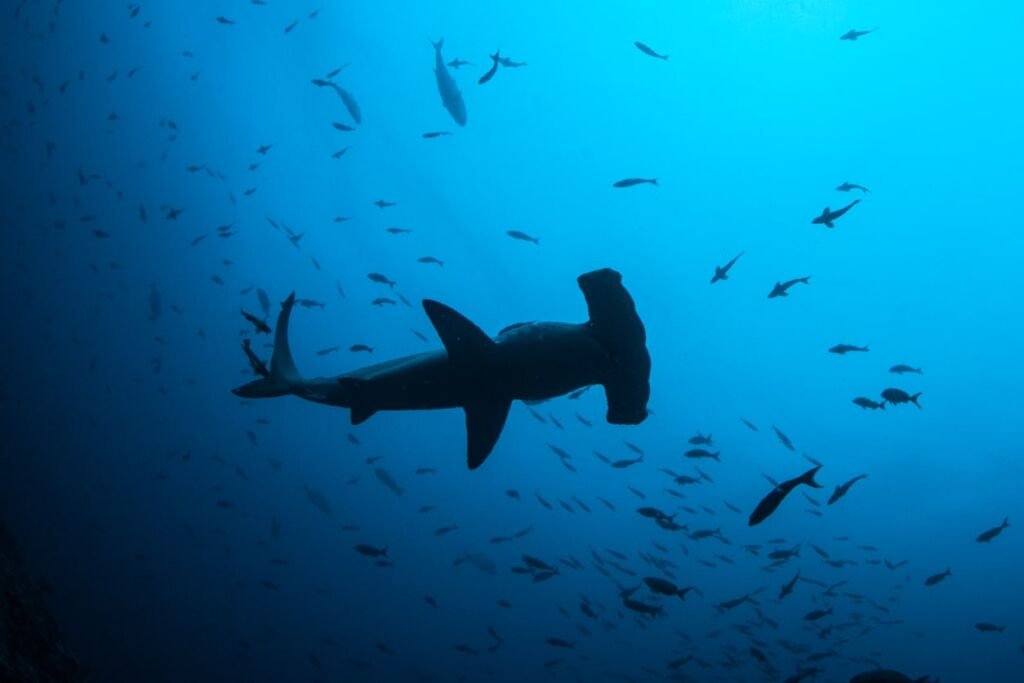
Sharks in South Carolina
Though South Carolina is adjacent to North Carolina the slight difference in environment is what some sharks prefer, and that results in a few sharks preferring this climate over the climate in the North.
1. Tiger Shark
The Tiger Shark needs little introduction as it is well known for its slightly striped skin which has the likeness of a tiger. Its skin is grey with dark stripes down its back and sometimes spots on its sides.
This large ferocious predator can grow up to 18 feet and can weigh up to 2000 pounds.
Tiger Sharks can be aggressive and have a wide palate range which means they eat just about anything they can kill or scavenge. That makes them one of the deadliest sharks to humans in the world.
This shark is second only to the Great White in terms of human attacks, but unlike Great Whites they do come back for more bites. So if bitten once, prepare to be attacked again. Caution is highly advised if you see one.
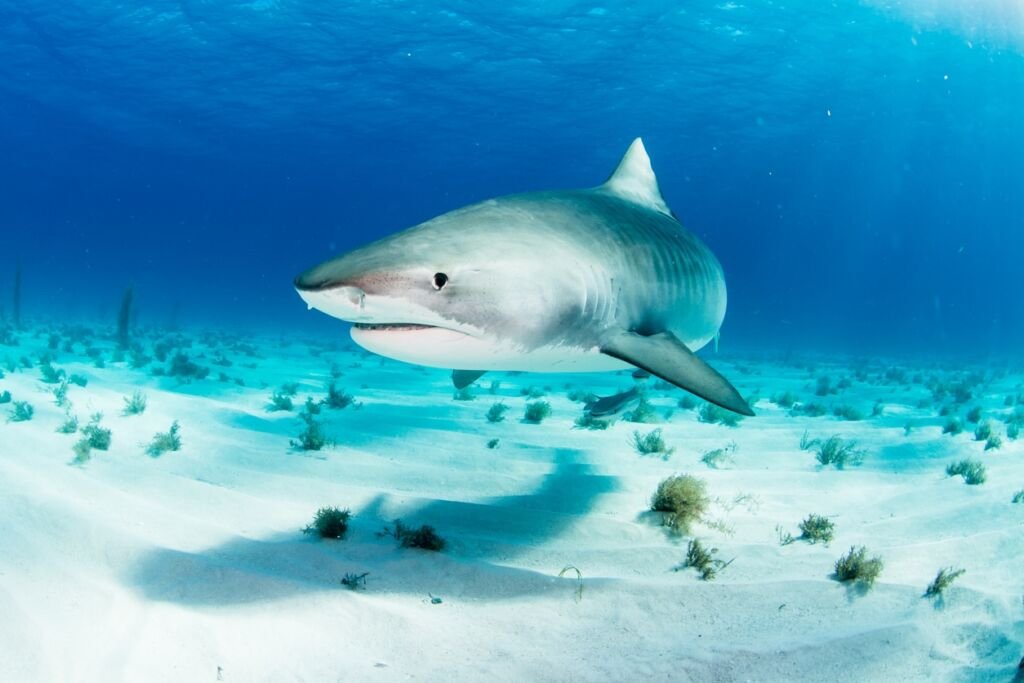
2. Spinner Shark
The Spinner Shark receives its name from its habit of jumping out of the water and spinning up to three times in the air before pluging back into the water! In fact this shark can clear a distance of up to 20 feet into the air when it jumps.
The average length of this shark is 5.2 feet, but they can grow to a length of 7 feet if given the right environment and time.
Spinner Sharks live in costal waters which puts them close to human environments. Due to their smaller teeth the spinner shark prefers smaller prey and is not overly aggressive towards humans or larger animals. They can bite though and there’s been 13 unprovoked attacks recorded – none of which were fatal.
3. Blacknose Shark
This shark gains its name from the dark tip on its snout. It has a dark second dorsal fin and so is its upper caudal fin tip.
When these sharks migrate, they tend to do so through shallow waters which makes them encounter humans. They are some of the most likely sharks to bite humans, but won’t do so intentionally.

4. Lemon Shark
Lemon Sharks get their name from their yellow-brownish skin which help them camouflage with the sea floor. They prefer to stay low to the ground and feed on fish that hide in the sand or near the sea floor.
The Lemon Shark is a medium sized shark with the largest one recorded at 12.1 feet. On average they can weigh up to 551 pounds.
Lemon Sharks pose little danger to humans as they are not particularly aggressive. There have only been ten unprovoked attacks recorded with no fatalities.
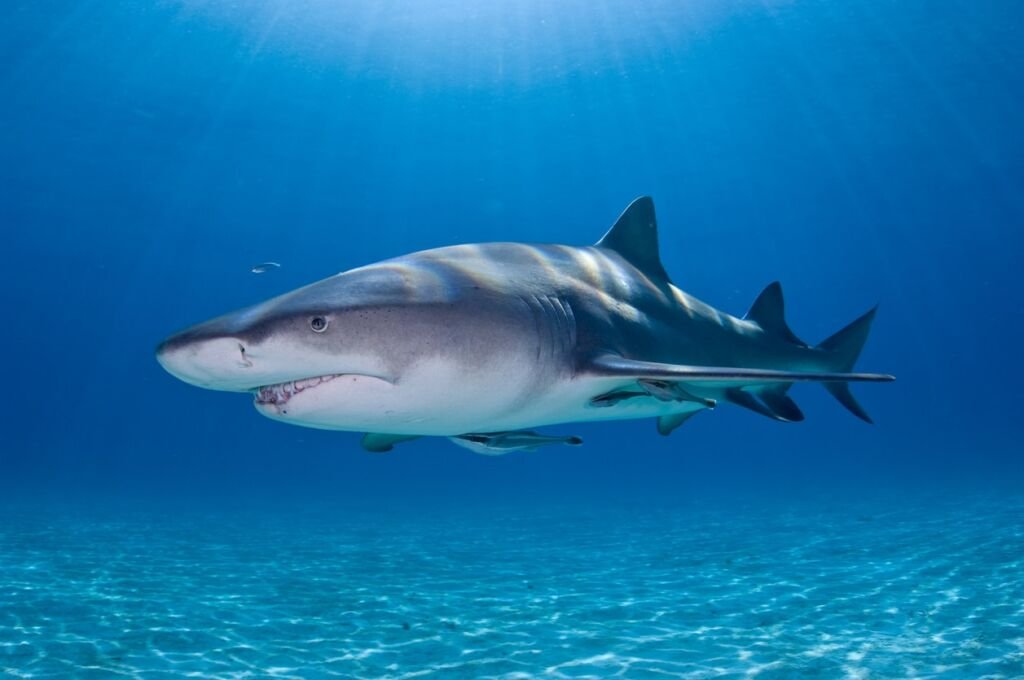
Sharks in North & South Carolina
Some sharks can handle a wide variety of oceans and rivers and tend to not be very picky. These sharks can be found in the same numbers in both North Carolina and South Carolina.
1. Bonnethead Shark
Bonnethead or Shovelhead Sharks are a member of the hammerhead species. They get their name from the shape of their head which resembles a shovel. It has a less-wide head than other hammerheads and that is what gives it this distinct visual characteristic.
Bonnetheads are the smallest of the hammerhead species with a length of just 3 to 4 feet and weighing about 13 pounds.
These sharks are quite shy and tend to avoid people with only one unprovoked attack being recorded. Regardless they are so small that they are non-threatening to humans.

2. Blacktip Shark
The Blacktip Shark gets its name from the distinctive black tips found on its fins. Black tips, like the Spinner Shark, have a habit of lunging out of the sea into the air!
They are small sharks and have an average weight of 40 pounds and a size of 4.9 feet.
Blacktips are very shy and tend to avoid humans which also makes it harder for scuba divers to approach them. There have been reports of 29 unprovoked attacks by these sharks, with one being fatal.

3. Sandbar Shark
Sandbar Sharks are bottom-dwelling costal sharks with no real distinguishing features. They are one of the biggest coastal sharks in the world.
These sharks are commonly measured at about 6 feet and weigh around 100 pounds to 200 pounds. The biggest one ever recorded reached just over 8 feet and came in at a whopping 260 pounds!
Mainly because of their size, they could be a cause for concern, but they do tend to shy away from humans in general. So just watch out for them and be aware as best you can.
4. Bull Shark
Bull Sharks gain their name from their short snout and their tendency to head butt their prey before biting – very different to other sharks. They have a stout body due to their high width to length ratio. These sharks are one of only a few that can swim in fresh water and salt water. So please do watch out if swimming in any rivers near the coast.
Due to the aggressive nature of Bull Sharks, they are considered to be one of the most dangerous to humans. Due to their ability to dwell in fresh water their interaction with humans is higher than most sharks, and they account for one of the highest attack counts compared to all other sharks.
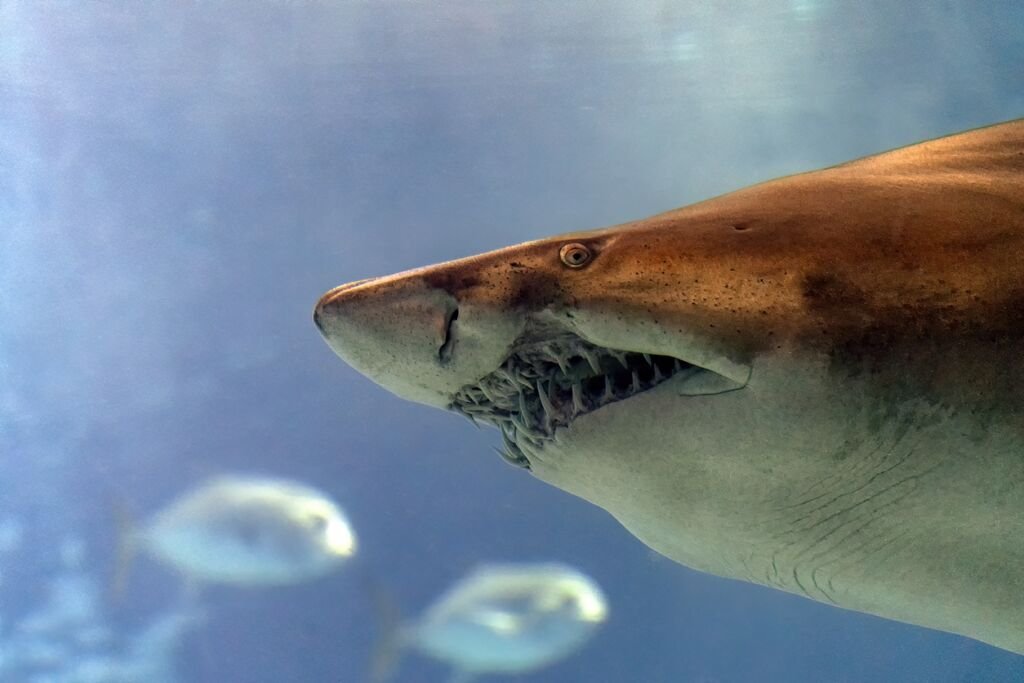
Shark Safety in North and South Carolina
As we have discussed, very few sharks are dangerous to people, and most are quite harmless. The most important thing to remember is you should always be alert when in the water and be sure to leave any sharks alone when encountering them. Only observe them in a safe manner to prevent any incidents.
However here’s two things you should keep in mind when swimming, diving and snorkelling in the Carolinas.
1. Dressing and Interacting Amongst Sharks
It may not seem obvious, but the color of your swimming attire can affect if a shark shows interest in you or not. Sharks have mono-chromatic sight which means they see in varying shades of white, black and grey. If your equipment is bright and contrasts against the ocean backdrop, sharks may be more inquisitive about your presence. Try and stick to darker colors if possible.
Another important thing to remember about sharks is that your behavior can affect any outcome when encountering them. Be sure to not make any sudden movements and always stay calm.
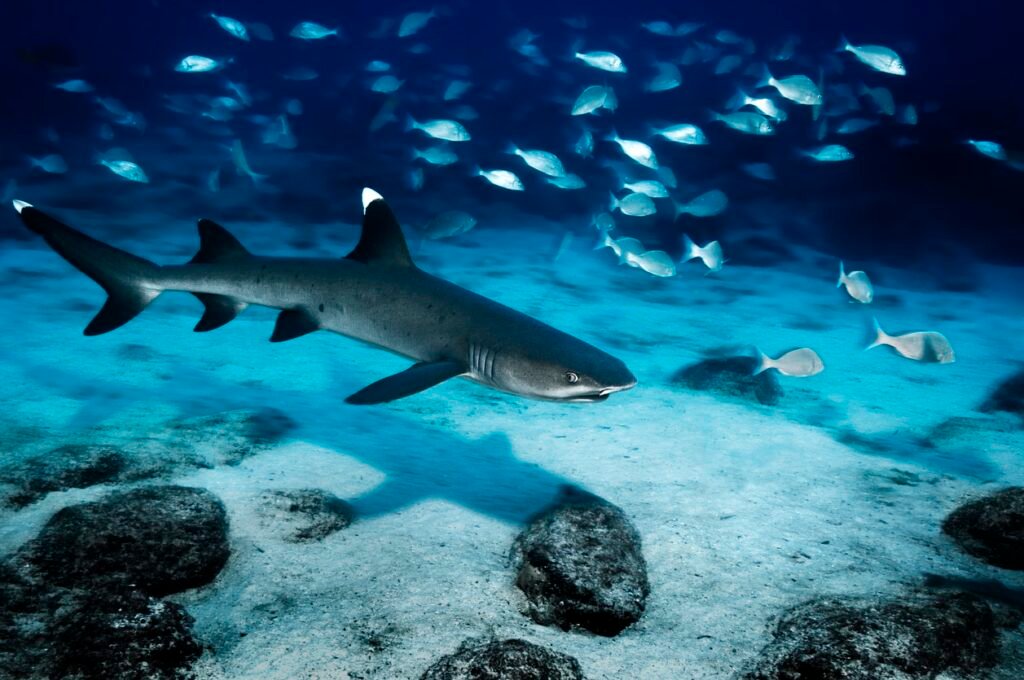
2. Prey or Equal?
While in the ocean with just some simple swimming equipment, there is no contest as to who is superior between human and shark. But that doesn’t mean you have to turn tail and get away as fast as possible. In fact that may actually put you in danger.
Stay as calm as possible and make eye contact with the apex ocean predator. This will show the shark that you are not prey. And by making eye contact with the animal and slowly moving away, you can keep an eye out on your surroundings as well as the shark’s movements.
There should be no real need to worry though. Shark attacks are so few and far between, that you are in more danger by flying in a commercial aircraft than being attacked by a shark. Just remember to be aware of your surroundings and always stay calm – even if you don’t feel it!
Final Thoughts on Sharks in the Carolinas
Sharks in North Carolina and sharks in South Carolina are there to stay, but they are not as life threatening as most people assume. There’s a low attack rate and even lower fatality count, so a deadly shark attack is extremely rare.
Caution and vigilance are always advised when faced with these majestic and dangerous creatures. Most of the time, sharks don’t come near humans nor the shoreline, and quite a few of them are too small to cause any life-threatening occurrences. There are still those, such as the Tiger Shark, that may make you fear the sea but as long as you are vigilant, you should be safe.
Just be sure to get good guides that have proper equipment when diving and always be aware of your surroundings. The coastlines in the Carolinas are stunning and very underrated. You would do well to go and see what marine wildlife they have – you may be quite surprised.




